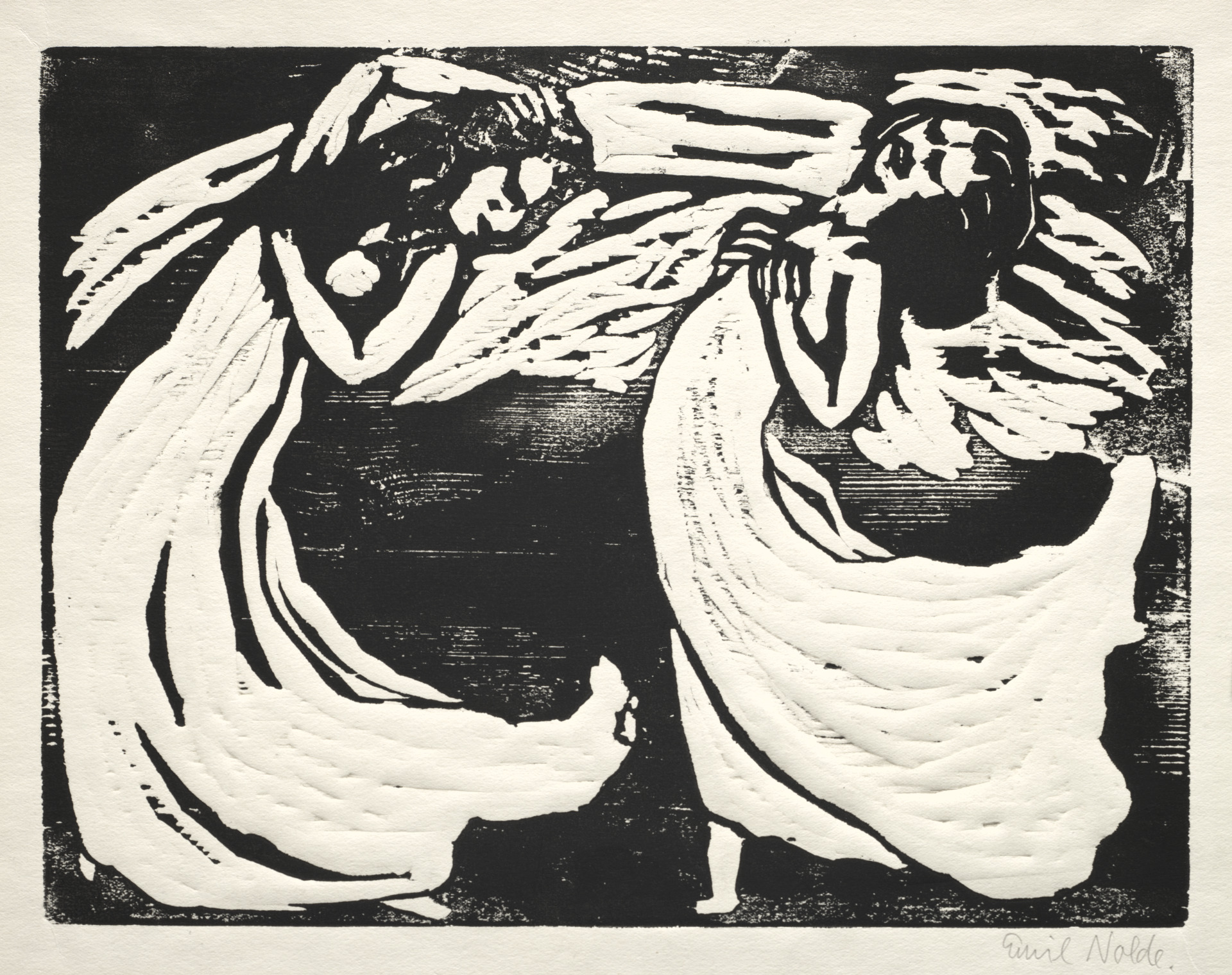- Magazine Article
- Collection
Two Dancers
Rhythmic ecstasy conveyed through a chiseled woodblock

Tanzerinnen (Dancers), a woodcut from 1917 by Emil Nolde, captures two robed female figures in the midst of an ecstatic dance. Shaping their bodies into dramatic but graceful curves, Nolde conveyed movement and rhythm as well as physical and emotional abandon. The woodcut technique was crucial to the German Expressionists, who responded to the wood matrix and its propensity for rough-cut, simplified designs. To make Tanzerinnen, Nolde gouged the block and left evidence of his chisel and knife cuts in the rough edges of the forms. He created texture on the dancers’ flowing robes by pressing the block to the paper without ink.
Nolde returned to the subject of modern dance throughout his career, finding a kinship between its freedom and expressivity and his artistic goals. He and his wife, Ada, befriended Mary Wigman, a pioneer of modern dance who emphasized improvisation and contrasting yet free movements, often accompanied by only a drumbeat. The stripped-bare, primal elements of Expressionist dance resonate in the form and technique of Tanzerinnen.
Nolde printed his woodcuts in small editions, producing great variety in inking and paper choice. In making the CMA’s impression, he applied ink to the block but then wiped it away in places to partially reveal the woodgrain, especially in the space between the dancers. Visitors can view this spirited woodcut in the exhibition Graphic Discontent: German Expressionism on Paper.
Cleveland Art, March/April 2018